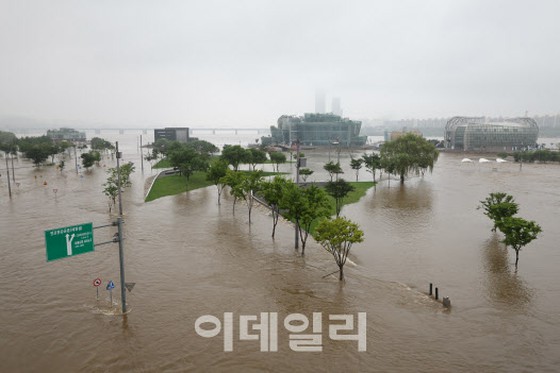 |
According to a July 16th report on the handling of torrential rains by the South Korean Ministry of Public Administration and Safety's Central Disaster and Safety Countermeasures Headquarters, 43 people have been killed so far, including 33 dead and 10 missing. In particular, a total of 15 vehicles, including buses, were flooded on an underground driveway in Osong, Heungdeok-gu, Cheongju, Chungcheongbuk-do, and the death toll rose to nine on the second day after the accident.
According to the Japan Meteorological Agency and the fire department, a flood warning was issued at 4:10 am on the 15th due to heavy rainfall in the Cheongju area around the Miho River, which caused the tragedy, due to the seasonal rain front from the 13th. The three-day precipitation in this area reaches 433.4mm. The river water level rose sharply due to the heavy rain, and by 6:30 am on the same day, it had already reached the "serious water level", which is higher than the warning level.
At the time, the Geumgang Flood Control Center reportedly told the district office that it needed to regulate the entry of vehicles into nearby roads. However, despite the tense situation, administrative agencies such as the relevant local governments were not implementing traffic control and embankment management. About two hours later, at around 8:40 a.m. on the 15th, the Miho River temporary embankment collapsed, allowing river water to flow into the underground roadway. In just a few minutes, the 430m long, 4.5m high underpass was filled with about 60,000 tons of water.
The Osong underpass tragedy continues to be pointed out as a "man-made disaster" that could not be prevented because it missed the "golden time" when heavy rain and flooding were fully expected. At the same time, residents continue to claim that the temporary levee management was false.
A citizen who was rescued at the scene of the accident said, "There were many buses and cars in the area, but the underground driveway was flooded from the front and back, and the water level rose rapidly."
Families of the victims and families of the missing have expressed anger, saying that a quick administrative response would have been enough to prevent the tragedy. Residents of nearby villages also say that the embankment was temporarily reinforced with sand collected by power shovels during heavy rains, but the embankment eventually flooded.
Sunsil University disaster safety management professor Moon Hyung-chul, who is a member of the Central Disaster Management Evaluation Committee of the Ministry of Public Administration and Security, said, "The Basic Act on Disaster and Safety Management (Disaster Safety Act), which went into effect in 2003, clearly stipulates a disaster management system that includes a four-step process for disaster prevention, evacuation, response, and recovery."
After a series of complaints, Chungcheongbuk-do said, "Even if a flood warning is issued, we are supposed to monitor road conditions and restrict vehicles."
2023/07/22 13:07 KST


![[Photo] "TWS" takes first place on "THE SHOW"!](/img/topic/28/142128/288570_640W.webp)